What Are Children?
I‘m still pondering our discussion of LIPS TOUCH . . .
FROM CHILDHOOD TO ADOLESENCE
The Newbery criteria famously leave the term "distinguished" vaguely defined so that (a) each committee can strive toward a working definition and because (b) it allows for flexibility should notions of what constitutes distinguished literature change over the course of time.
Similarly, I think that the term "children" is left somewhat vague. The Newbery criteria tell us that children are defined as persons up to and including fourteen. Each committee wrestles with the books at the upper end of the range and whether they appeal to "children."
Nina makes an excellent point–
No fourteen year old is fully and only "childlike" or "young adult." . . . Consider the competing dynamics in the brain of a thirteen or fourteen year old. What in them is still a thumb-sucker, or, better, still the person-COMING-of-age…and what in them is the COME-of-age, jaded, adult. Can’t we ask that the Newbery speak to the COMING, not COME of age audience within each potential individual thirteen/fourteen year old reader?
And Eliza Dresang makes a similar point—
Childhood to young adulthood is a transition, a gradual process that has no precise demarcation line (such as the physical onset of puberty) . . A young person in that cross-over zone–ages 12 to 14–may be a child one moment, hour, or day and a young adult the next moment, hour, and day in psychological needs, in perspective, and in interests. And . . . the very same book may be read differently by a ‘child’ who is 12 from the reading by a ‘young adult’ who is 12.
AS CHILDHOOD CHANGES THROUGH THE YEARS
Here’s something further to consider: Do you think that the nature of childhood has changed over time? And if so, how has our view of child appeal changed to accomodate it? For example, In her book of essays and speeches, TALKTALK, E.L. Konigsburg writes—
As I was growing up, I always had the feeling that I understood a lot more than I knew. When I listen to my grandchildren, I think they know a lot more than they understand. The difference is exposure. Even before starting school, they see more and hear more than I did as a high-school graduate. Perhaps, saying overseen more and overheard more is a better expression because they have been exposed to a great panorama on a very small scale. Their big world is a small place–the size of a television screen. My small world was a big place–my neighborhood.
Nowadays we might replace the idea of the television with that of the computer. In any case, the aformentioned Eliza Dresang wrote in her book, RADICAL CHANGE, about how the digital era has literally changed the way children read.
But how else have children changed now that they are exposed to coarser language, more violent imagery, and sexual innuendo? Are there other changes in society, say the prevlance of single parent families or families with two parents of the same gender, that may affect childhood and, by extension, our view of child appeal? What about taboo experiences of children such as abuse (sexual, physical, verbal, emotional), the onset of puberty that often happens in the elementary grades, or the sexual experimentation that often begins in middle school and junior high? How do shifts in cultural mores and values inform how we judge whether a book displays respect for children’s understanding, abilities, and appreciations?
WHEN THE CHILD HAS ALREADY COME OF AGE
More food for thought: Do you think there are parts of our being that are fully developed as children, that have already come of age? I’m not talking about the physical changes of puberty (although those can often begin in childhood). No, I’m talking about something like imagination. In her book of essays and speeches, DREAMS AND WISHES, Susan Cooper writes—
I don’t know whether anyone has ever tried to chart the chronological development of the imagination, but I would guess that it’s fully grown by about the age of six. Or at the very latest, eight. It’s formed by then, it will not get larger, or more lively, or more responsive. Age and education and experience can direct it and feed it, but they won’t alter its quality . . . That is the fundamental link between the child and the so-called children’s author. One full-grown imagination is speaking to another.
In the preface to ENDER’S GAME, Orson Scott Card writes (and I don’t have the book on hand to quote verbatim) that he forced his readers to consider the thoughts, feelings, and emotions of these boys as if they were very real. Card further writes that he never felt like he was less of a person simply because he was child. He never felt like his thoughts, feelings, and emotions were somehow less developed, less important, less real. And I would agree with him: I think there is a part of our consciousness that knows that even as children we are people, first and foremost. So I also think in addition to imagination there is a part of our consciousness that is also mature beyond its years.
I quoted Cooper and alluded to Card at the beginning of my article, "Epic Fantasy Meets Sequel Prejudice," because I think, for these very reasons, that fantasy readers tend to ignore marketing decisions: children read Tolkien; adults read Rowling. Indeed, in a recent SLJ interview Terry Pratchett took this same view–
I write what I prefer to call fantasy fiction, even if it is pretty short, in some cases, on the classic fantasy ingredients. I take the view that fantasy fiction for children and fantasy fiction for adults are the same genre. I know adults read my children’s books and children read my adult books.
PRACTICAL CONSIDERATIONS FOR CHILD APPEAL
What does all this mean for the current fantasy books? Will thirteen- and fourteen-year–olds read FIRE by Kristin Cashore? Most assuredly. But the main character is sexually active and that (along with the page count, perhaps) hampers our view of this as a Newbery book. The sexuality in LIPS TOUCH is much more teasing, more tantalizing, more mysterious. I think most of us would find it much more appropriate for a child audience. Ditto for CATCHING FIRE which Nina already discussed.
And what does it mean for books with a contemporary setting? What about books like WINTERGIRLS by Laurie Halse Anderson and MARCELO IN THE REAL WORLD by Francisco Stork? Fourteen-year-old readers? Yes, but again I think most of us would gladly cede these to the Printz committee for recognition. What about STITCHES? Leaving aside the problematic aspect of the text-picture relationship, and acknowleding that it probably has a snowball’s chance in you-know-where, I think STITCHES speaks much more to childhood than WINTERGIRLS or MARCELO does.
If we cannot measure the maturity of our imagination in terms of age then what about our curiosity? I’ve found that children can be insatiable when it comes to learning about something that fascinates them. The key, of course, is that that have to be fascinated. Thus, readers who want to learn about black widow spiders will devour everything they can get their hands on, regardless of whether it’s marketed for children or adults. But try to get them to read a nonfiction book on something they don’t find inherently interesting? Well, good luck, no matter how well written. So I think that the audience for nonfiction, too, is defined by interest rather than age. One full-grown curiosity is speaking to another.
What can we say about the child audience of CHARLES AND EMMA? It may be interested in Charles Darwin. It may be interested in evolution. It may be interested in science. It may be interested in romance. But one thing’s for sure: it’s smart and savvy and intellectual.
For me, then, FIRE, WINTERGIRLS, and MARCELO, however excellent they may be, are too old for the Newbery, while STITCHES, LIPS TOUCH, CATCHING FIRE, and CHARLES AND EMMA all appeal to fourteen-year-olds as "children." But whether they are sufficiently distinguished and whether I could build consensus around them at the Newbery table are entirely different matters.
Filed under: Uncategorized
About Jonathan Hunt
Jonathan Hunt is the Coordinator of Library Media Services at the San Diego County Office of Education. He served on the 2006 Newbery committee, and has also judged the Caldecott Medal, the Printz Award, the Boston Globe-Horn Book Awards, and the Los Angeles Times Book Prize. You can reach him at hunt_yellow@yahoo.com
ADVERTISEMENT
ADVERTISEMENT
SLJ Blog Network
100 Scope Notes
The Moral Dilemma of THE MONSTER AT THE END OF THIS BOOK
A Fuse #8 Production
Cover Reveal and Q&A: The One and Only Googoosh with Azadeh Westergaard
Good Comics for Kids
Winnie-The-Pooh | Review
Politics in Practice
Parsing Religion in Public Schools
Teen Librarian Toolbox
Finding My Own Team Canteen, a cover reveal and guest post by Amalie Jahn
ADVERTISEMENT

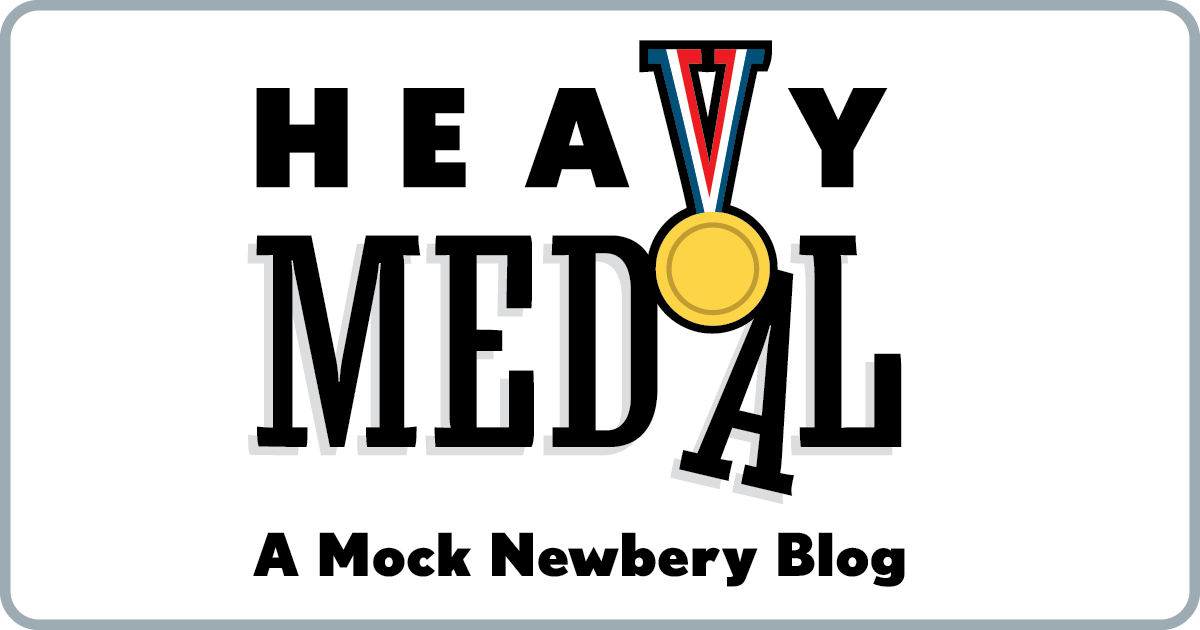
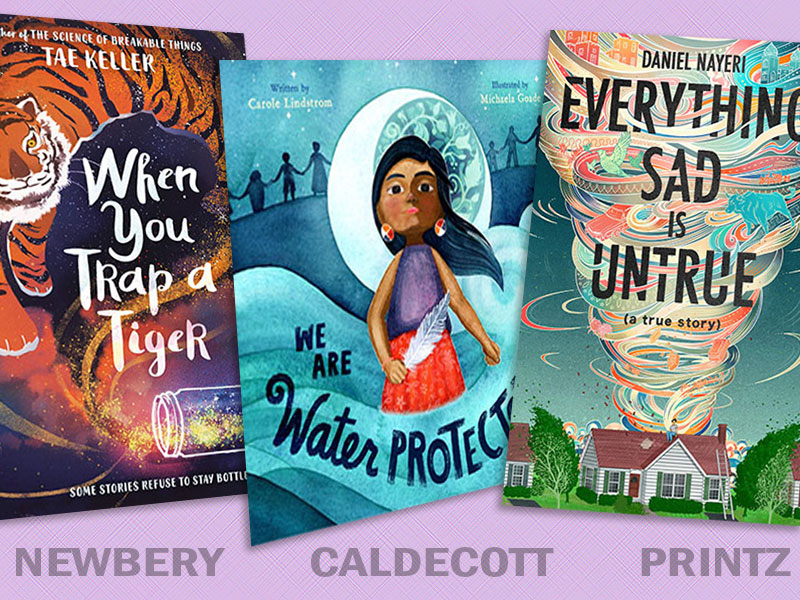
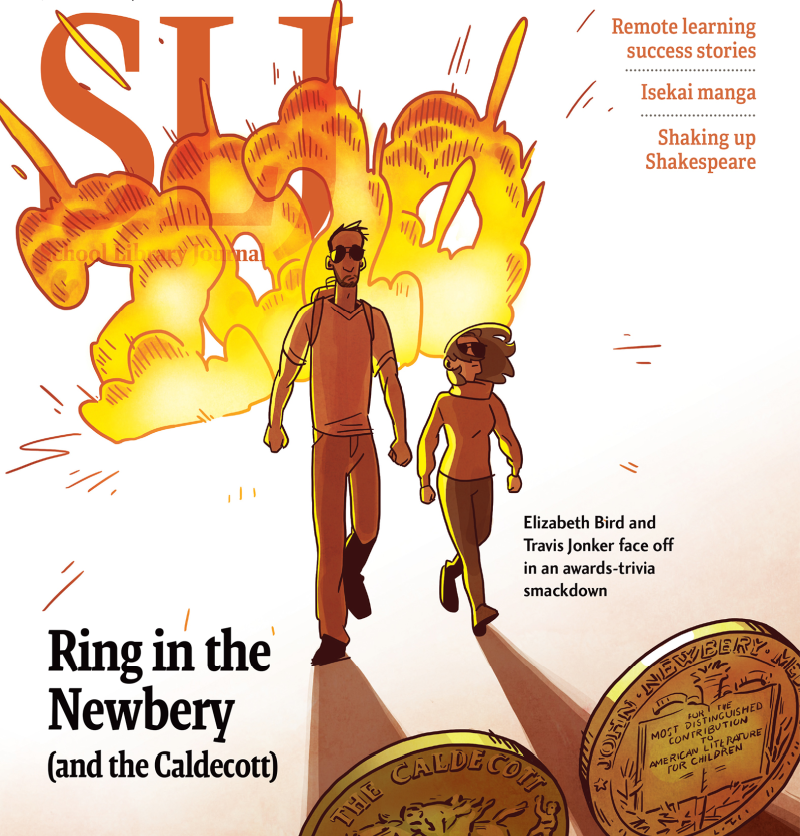
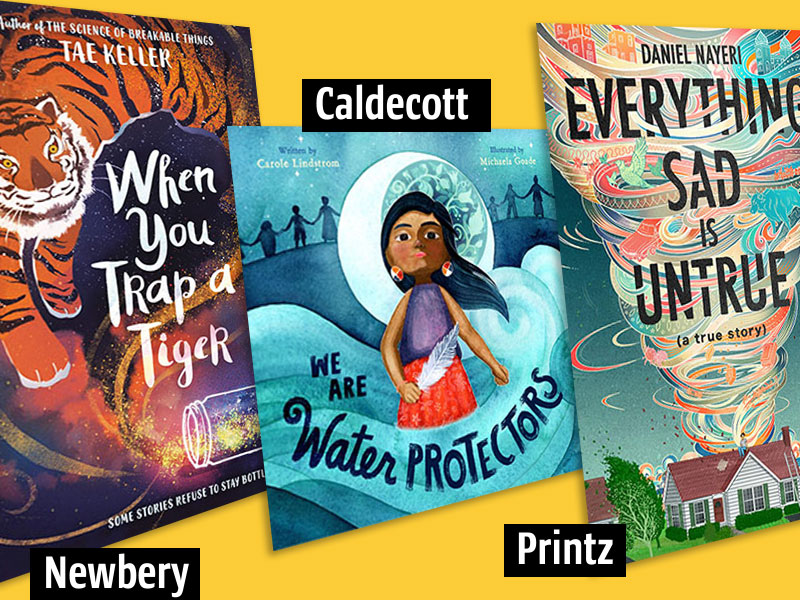
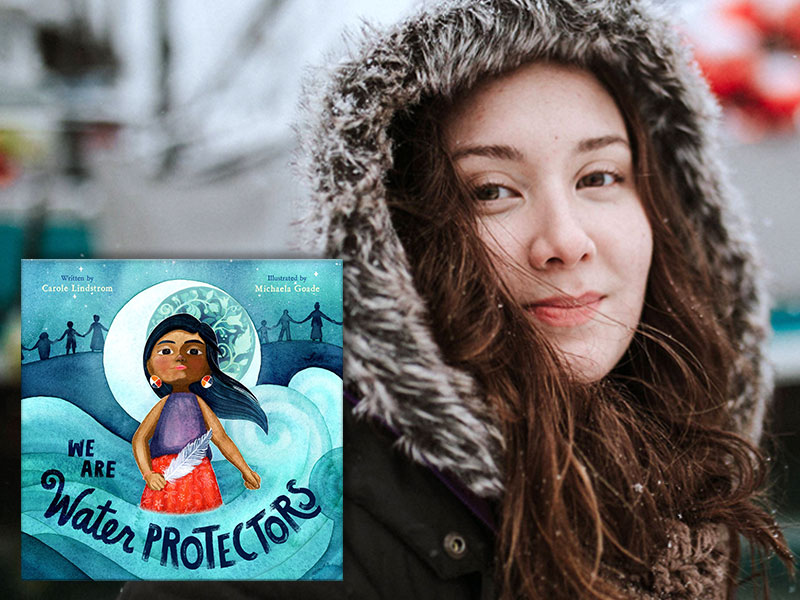
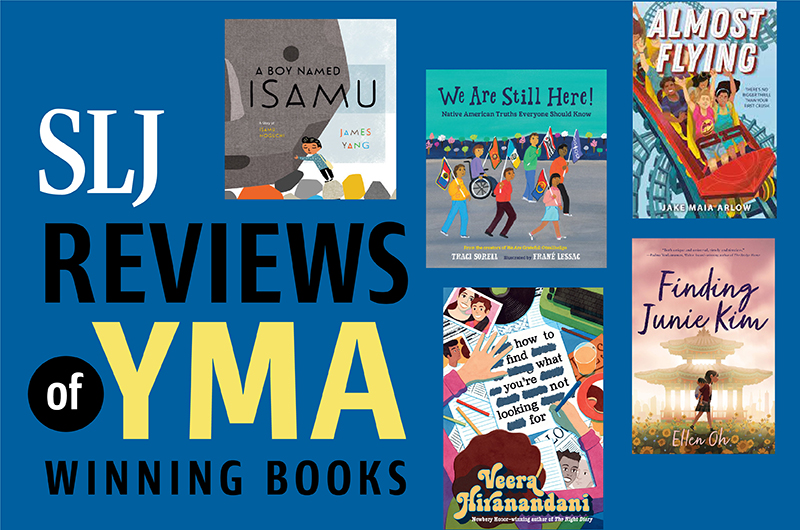
Excellent post getting right to the heart of the matter.
While I agree with you about FIRE, CATCHING FIRE, and CHARLES AND EMMA, I’m not so sure about LIPS KISS. To me what possibly bumps it up are those themes in the final story — birth, parenting, spouses, that nostalgic yearning — not the sexual stuff which seems within range to me too.
As for STITCHES, while I agree it “speaks to childhood” does it speak to current children as well?
And how about why you think WINTERGIRLS and MARCELO are not for children as you are defining them here?
I love this post — a good shot at defining that indefinable difference between material for children and material for young adults.
One thing about STITCHES: When I brought it home and handed it to my fifteen-year-old son, he read it and liked it. I told him the author was a children’s book illustrator. His first comment was: “This is NOT a children’s book.” I tend to agree with him.
Monica, we have a mutual friend that strongly disagreed when I characterized FIRE as a high school book. I’m sure she has lots of middle school students reading it, but I don’t think she’d necessarily see it as a Newbery book either. It’s not that the sex traumatizes the children, it’s that it traumatizes the gatekeepers.
WINTERGIRLS and MARCELO have similiar issues that signify them as YA more than juvenile, and this coupled with the age of the main characters, the genre, and the length of the story . . . Well, you just have to pick your battles, especially in a consensus process. I think JUMPED feels younger than both WINTERGIRLS and MARCELO and I yet it’s still probably too old for the Newbery, at least in terms of perception.
One of the things about great literature is that it can be read on multiple levels, and I think LIPS TOUCH is a perfect example of that. What you are reading as a story about birth, parenting, and spouses, a child is reading as a story about the invasion of the body snatchers.
I think STITCHES speaks to a particular child, perhaps the child who lives that life. It’s the old ironic conundrum: It’s inappropriate for children to read about some things, and yet some children *experience* those very things. Take another look at WHAT JAMIE SAW, and take a look, too, at NO LAUGHTER HERE (female genital mutilation), THE SUNBIRD (torture), and THE FACTS SPEAK FOR THEMESELVES (illicit sexual relations) and then answer the question: Yes, these books speak to childhood, but do they speak to children?
When my mock Newbery group of fifth grade students read SILENT TO THE BONE several years back, they all thought it was inappropriate for younger children. And I expect you’d see the same kind of child response to STITCHES. It’s inappropriate for younger children, but they–of course–are made of stronger stuff.
Last year I had an incoming sixth grader who had read THE LOVELY BONES over the summer. Next to that all of the books we have mentioned here may seem like child’s play.
Good point about invasion of the body snatchers:)
In my experience kids tend to always think a scary book is too scary for kids younger than themselves.
Point about FIRE.
Great post! Love the response on Fire “traumatizes the gatekeepers”. I was on the fence about ordering it because I thought it was “too advanced” for my middle schoolers, even though I loved it, I thought Cashore was too heavy handed with her values, but my Graceling readers were begging for it…
Agreed on Wintergirls – though again, my LHA fans wanted it…
And great line –
“these books speak to childhood but do they speak to children?”
Will mention at my next teacher’s Mock club.
I’m glad you included that quote from Konigsburg, because she’s hit the nail squarely on the head.
Kids in today’s society tend to know more, but understand little. Take math for example. So many parents make statements to me like “Jeez, these kiddos (I teach 5th grade – 10/11 year olds)are learning stuff that I didn’t learn until middle school and junior high!”
While true, I caution them when using the word “learning”. Yes, my 5th graders are studying and being exposed to algebra concepts and geometry concepts BUT do they really understand it? That’s the question.
I guess what I’m trying to say is that I don’t like the idea of the Newbery committee broadening it’s range of books simply because they THINK kids are understanding more in today’s society. I wouldn’t want a Newbery committee to consider a book aimed at 16 year olds, simply because they feel like most 12-14 year olds could probably understand it. Because in my opinion, kids may have been “exposed” to things mentioned in some of those higher level books, but whether they actually “understand” it, is up for discussion.
I’m in the middle of CATCHING FIRE, and while I LOVE it personally, I don’t see it as a Newbery book. How old is Katniss? 15? She’s the narrator of the story. Her actions and thoughts drive the plot of the story. If the Newbery is supposed to aim itself at “children” “age 14 and under” how can an argument successfully be made for CATCHING FIRE?
Same goes for STITCHES. While you may like that book, while I may like that book, is not the point. In a Newbery discussion, we shouldn’t even be wasting time discussing it.
My two cents . . .
One more thing . . .
Personally, I don’t like the fact that kids are exposed to so much at such an early age. And the fact that the Newbery would possibly consider books outside of the “14 and under” range simply because they think kids could understand it, scares me.
I think it would only be adding to the whole “early exposure” thing. I see it everyday in school. Kids laughing at jokes that are over their head without truly understanding the joke. Watching “R” rated movies for the sake of watching an “R” rated movie, and not truly understanding any of it.
It’s an interesting discussion you’ve brought up, but I don’t know if I like it! Maybe I’m thinking too “black and white” and not acknowledging the “grayness” that exists. But personally, I can still tell when a book is aimed at children older than 14, and to me, books like that, no matter how good they are and no matter how much we think a 12 year old COULD understand from them, shouldn’t be up for discussion as a Newbery winner.
1. I taught fifth grade for six years, and California changed the math standards for the last two years of my fifth grade stint, making them more developmentally inappropriate (in my opinion), so I definitely get what you are saying, but while algebra may be inappropriate for fifth graders, is it inappropriate for eighth or ninth graders?
2. In your fifth grade class you have some students that are reading at a primary grade level and others that are reading at a middle level. Additionally, you have similar ranges in terms of life experience, maturity, and interests–and all of that informs both the appeal and the appropriateness of any given title. Therefore, if authors wanted to “aim” a title at a 10- or 11-year old, they would have a fairy broad target, and if they wanted to aim at a range (say 9-12 or 10-14) they would have an even larger target.
3. But who “aims” these books, anyway. Is it the author? Or the editor? Or the marketing department? Or some combination of these?
4. I think we would all probably agree that some books most definitely are not too old (WHEN YOU REACH ME, A SEASON OF GIFTS, THE EVOLUTION OF CALPURNIA TATE), while other books most definitely are (WINTERGIRLS, MARCELO, JUMPED, STITCHES). What I’m interested in are those books that hover on the fringe (LIPS TOUCH, CATCHING FIRE, CHARLES AND EMMA) and note that I have justified in the main post why I think fantasy and nonfiction are particularly well-suited to speak to young readers. You may disagree with me whether these are appropriate for Newbery, but I think you will probably agree that they are younger than the too-old titles I just mentioned.
5. I don’t remember anybody arguing for CATCHING FIRE, although most objections here have centered around the literary elements rather than the child audience. I did say that I thought THE HUNGER GAMES was worthy and I also said that if THE EVOLUTION OF CALPURNIA TATE merits serious consideration then I think CATCHING FIRE does, too.
6. Isn’t the conventional wisdom that young readers like to read about characters slightly older than themselves? That’s certainly true of realistic fiction, not so much with fantasy and science fiction. If Collins had left the age of Katniss deliberately vague like Lloyd Alexander did in the Prydain Chronicles or Megan Turner did in her Eugenides series would that make a difference? I don’t think so.
7. I understand your general concerns about picking PG-13 and R rated books for the Newbery. I don’t think any of us want R rated books. It’s the PG-13 ones that are giving us fits. We’d probably have to take things on a case by case basis, which is what we’ve been trying to do here on the blog.
I didn’t mean to sound snooty . . . just giving my two cents.
I love children’s literature and really really enjoy reading your blog here. It keeps me in touch with what’s out there being released right now.
I see where you’re getting at, I guess personally, I just still see CATCHING FIRE as being a little too old for the Newbery. However YES, it is younger than the other titles you mentioned.
But it’s just my opinion. Yours is different and that’s fine. That’s where the discussion comes in!
And about my math comparison . . . NO, I don’t think algebra is inappropriate for 8th and 9th graders, but that’s the point and that’s why I was comparing it to this discussion. Our district adopted, 5th grade math curriculum has numerous chapters teaching algebra concepts. While my students are able to follow along and do alright on the work, in my opinion, they really don’t understand what’s going on. They’re merely being exposed to it. That’s why I thought your E.L. quote was GREAT! Because I agree wholeheartedly.
I haven’t read LIPS TOUCH, so I don’t want to comment on it too much, however just about everything I’ve read about it, claim it’s Young Adult and aimed at teens. Now does that mean THIRTEEN and FOURTEEN, or older? I haven’t read, like I said, so I can’t comment too much . . .
CATCHING FIRE, in my opinion, is slightly too old as well, but then again, I’m stuck in 5th grade with a bunch of 11 year olds so my opinion might be a little biased. These are the kids I see on a regular basis and maybe I just need to realize that kiddos three years older than mine still fall within “Newbery range”. I might be a little guilty of looking at my kids as the upper level when in fact, they’re not!
Thanks for the discussion!
Thank you for a thoughtful discussion. I am in the middle of Lips Touch, and I’m having a very interesting reaction. I am so gripped (with wonderment and fascination) as an adult by its themes and imagery that I’m having trouble reading it through my “child eyes”. I will definitely have to re-read it to think about how would I see this if I were 13 or 14.
My hunch is that it can be read in different ways, emphasizing different parts of it depending on what the reader is receptive to. Some readers might key into the sensual descriptions, while others might key into the fantasy elements of it. The reader’s point in development will definitely affect that.
Food for thought. Thank you for wetting my appetite.
I just finished LIPS TOUCH, and found myself drawn to it in the way that Mary Ann did…as an adult.
I think it’s a distinguished book. I think 13 and 14 year olds can read it, and can read it through “child’s” eyes at a certain level. But I don’t think that it’s distinguished at that level. I think what makes it remarkable are very adult themes (and by adult here I don’t mean sexual) …what is a life worth? What kind of a life can be called living?
But do kids read for theme? I don’t think so! I think they read for plot, character, and setting–and all of those elements in LIPS TOUCH are similarly distinguished. I’m not saying they can’t appreciate theme and style, but that’s not necessarily why they read.
Ok, but theme is a Newbery criterion. To be balanced, yes, with plot, character, setting etc. Are the plot character and setting in Lips Touch distinguished? Is the theme, as interpreted for a child audience? (I’m on the fence here, just goading you…)
As adults we have the luxury of reading a book and saying, “I am reading this as an adult” or “I am reading this as a child,” but the child reader has no such luxury. The child only has one way to read the book. I know we’ve been talking about 13- and 14- year old readers for LIPS TOUCH, but what about my two 11-year-old readers? Is the book really appealing to the adults in them?
I’ll also add that my students and I read the advanced reading copy sans illustrations. My hardcover came in the mail yesterday. I wonder how much the cover art coupled with the illustrations suggest young adult rather than juvenile.
Ok, but is it really distinguished for an eleven year old. That’s the question.
Nina, I’m still not quite sure what your question is. The style is certainly distinguished, as evidenced by the brief passages that I quoted, and I certainly think an 11-year old can appreciate the language. The setting, the world-building, is absolutely distinguished, and an 11-year old can fully appreciate it. The characters, both characterization and character development are distinguished, and while a 13- or 14-year-old would appreciate them more, or perhaps appreciate them on a different level, than a 10- or 11-year-old would, it doesn’t necessarily mean that that this literary element is less distinguished. And I would say the same for theme. So does the book appeal to children, or at least some children? Absolutely. Does it display respect for their understandings, abilities, and appreciations. Yes, it does. It allows them to take from each story what they are ready for developmentally. I think it’s a sign of great literature, personally, when a text lends itself to multiple readings like this.
I, too, am open to being convinced that this is too old for the Newbery. I think the illustrations certainly nudge me in that direction as only some sketch art for the first story was included in the ARC, and I think the finished artwork conveys a mood and intesity that suggests young adult more than juvenile. If anybody else read the ARC first, I would welcome second opinions on seeing the finished artwork.
On the other hand, I had a sixth grade boy that walked in today and snapped up my finished copy.
Lips Touch makes me think about the criterion that mentions pictures distracting from the text. I thought the art there makes the book look less sophisticated than it is.
I’ve been thinking about the same clause, Roger. I’m open to the suggestion that the cover and interior illustrations (not to mention the title) skew the appeal upward (perhaps even outside the reach of the Newbery–at least by most perceptions), but I’ve been pondering whether or not they “distract” from the text. I’d probably need a second read now to consider the relationship between the text and illustrations, but I will say that DiBartolo’s visions are vastly different from the ones I created in my head. Kind of like seeing a movie, and knowing that the director didn’t capture the superior vision that you, as the reader, had.
Again, I haven’t read LIPS TOUCH, so I don’t want to get too deep here, but . . .
It sounds like you’re stretching a bit to make this readable by 11 year olds. Suggesting that SOME will be able to appreciate its style and theme and suggesting that “certainly” 13 and 14 year olds can. The scene you described about “girls” sitting on “boys'” laps . . . I can guarantee you that a lot of 11 year olds will NOT be able to put that scene into context.
My question then, is this book really THAT good, to totally ignore 12 year olds and under, and only appeal to that sliver of children at the upper range of Newbery criteria? Is it that distinguished to be given true consideration, or is it just an interesting discussion piece right now. I scrounged the internet for mock Newbery lists and didn’t find LIPS TOUCH on too many . . .
I’ve got this book on order because after this discussion, I have to read it. But remember, we’re all ADULTS. I’d love to hear from Jonathan about what his students that are trying this book out think . . .
What I’m hearing though, sounds above 11-12 year olds. Most 5th and 6th graders, are NOT “touching lips” . . . some, sure. But even them, not to the extent of understanding what it sounds like Taylor is really talking about in this book.
I was very surprised when you initially said LIPS TOUCH was for Newbery age. But I had only seen the cover, not read the book. Whereas you had read the book without seeing the cover. That explains a lot!
The cover and illustrations do lead you to believe the the book is for an older audience. I didn’t feel that the illustrations detracted from the text, but I did rely on them to give me the back story, rather than waiting for the story to tell itself.
I purposefully ignored the illustrations so that I wouldn’t get the backstory. They’re not essential.
Interesting that some think the cover makes it seem “older” while some think it makes it seem “less sophisticated” than it is!
1. If you think CATCHING FIRE is inappropriate for the Newbery than I can’t imagine you’d be receptive to LIPS TOUCH.
2. Many children have had little crushes throughout elementary school, have seen romantic/flirting/dating activity either with their parents and older siblings or in television and film. I don’t think they are that naive and innocent and sheltered.
3. The kissing really isn’t the focus of the stories at all. Had you taken away the title and author’s note and played twenty questions with me to guess what linked the three stories together, it’s quite possible that I would have lost.
4. This book sits precariously on that too-old/just-right line. I think the text is distinguished in a Newbery sort of way, but I wonder if the title, the cover, and the illustrations make difficult Newbery obstacles almost insurmountable.
5. My two sixth grade readers were interested in the controversy when I shared it with them. They definitely didn’t think it was for younger children. They definitely thought older children could handle it. When I asked what they thought about sixth graders, one of them responded: Well, you probably shouldn’t ask me since I’m reading PRIDE AND PREJUDICE.
Huh!Since when is the target age for the Newbery eleven?